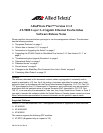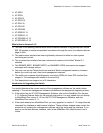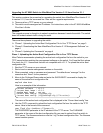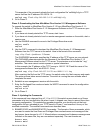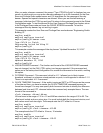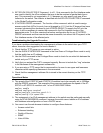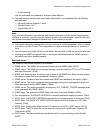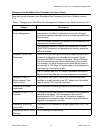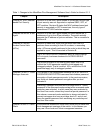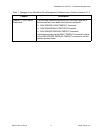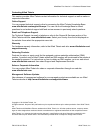
AlliedWare Plus Version 2.1.2 Software Release Notes
PN 613-001447 Rev A 7 Allied Telesis, Inc.
— VLAN stacking
Use the command line interface to configure these features.
The web browser interface has been tested and found to be compatible with the following
web browsers:
— Microsoft Internet Explorer 7 and 8
— Mozilla Firefox 3.6.3
— Apple Safari 4.0.5
Note:
If you are using Explorer 8 web browser and the pull-down menus in the switch’s web browser
interface do not work, open the Internet Options window in the web browser, select the Security
tab, and set the custom settings to medium-high. Then refresh your page.
You cannot change the configuration of a port, such as its VLAN assignment, after it is added
to a static or an LACP trunk. The configuration of a port must be set before it is added to a
trunk.
You can create up to 4096 VLANs on the switch, but only 255 VLANs can be active at a time.
Changing the SNMPv3 engineID value is not recommended because the SNMP server on
the switch may fail to operate properly.
Resolved Issues
The following issues were resolved in this release.
SNMP server: The SNMP server stopped working during SNMP walks. (8222)
SNMP server: The SNMP server stopped working if you activated the HTTP or HTTPS server
and reset the switch. (8148)
SNMP and Telnet servers: A memory leak problem in the SNMP and Telnet servers caused
the switch to reset after forty management sessions. (8318)
SNMP server: Access control lists created with SNMP were deleted by the switch. (8651)
SNMP server: The switch displayed debug messages during local management sessions if
there was also an active SNMP session. (8646)
SNMP server: The switch periodically displayed an IPC_TIMEOUT_ERROR message when
it was managed with SNMP. (8201)
SNMP traps: The switch sent SNMP traps even when they were disabled. (8650)
Port configuration: The SHOW INTERFACE command displayed negative numbers. (8263)
SNTP client: The CLOCK TIMEZONE command did not accept minutes in its format. (8145)
SNTP client: The SHOW NTP ASSOCIATIONS command did not display the UTC offset
correctly. (8196)
SNTP client: System time drifted forward if it was set by an NTP or SNTP server. (8612)
SNTP client: The NTP client did not synchronize properly with the Microsoft Windows XP
Time server. (8626)
SNTP client: The client periodically caused the switch to stop forwarding network traffic.
(8637)



